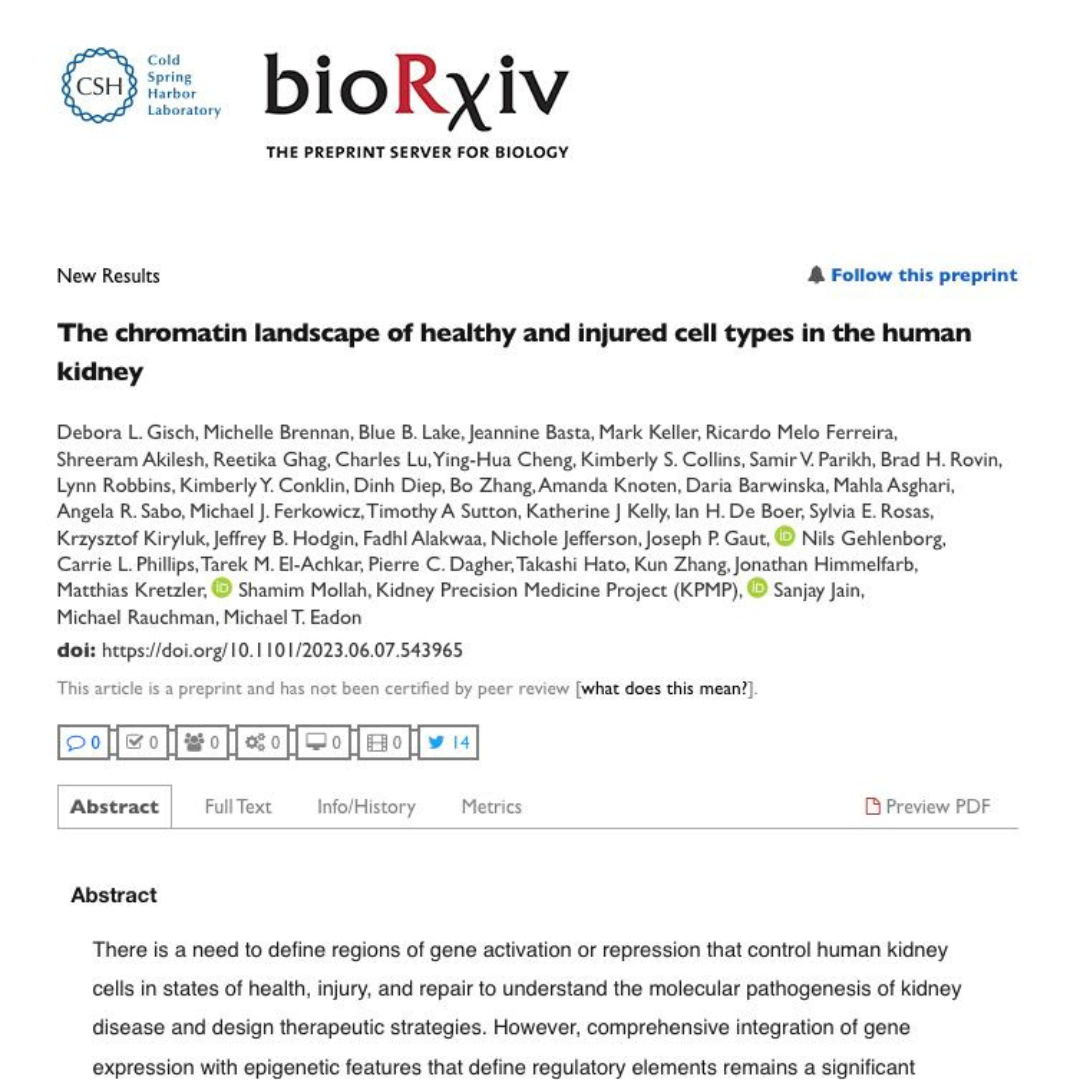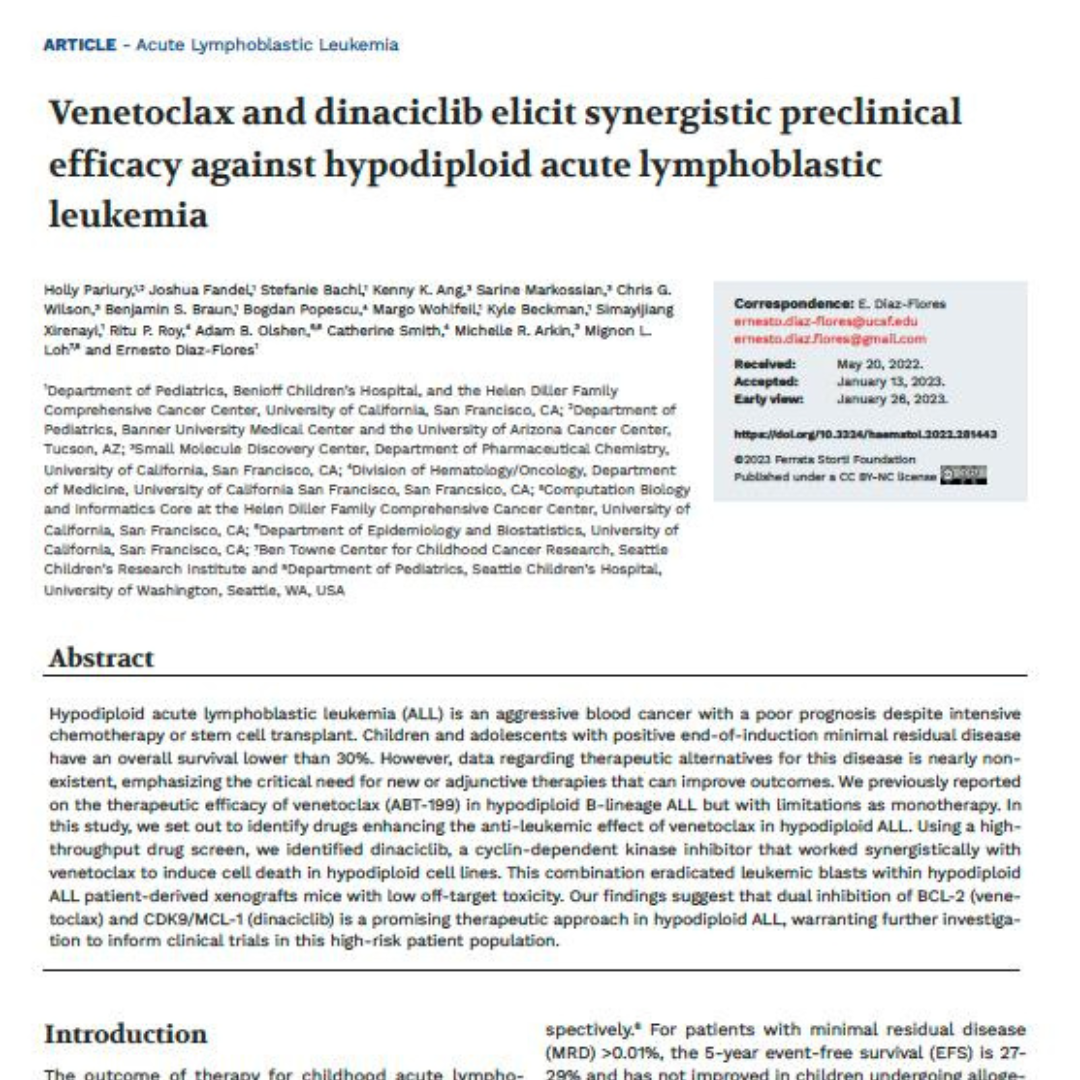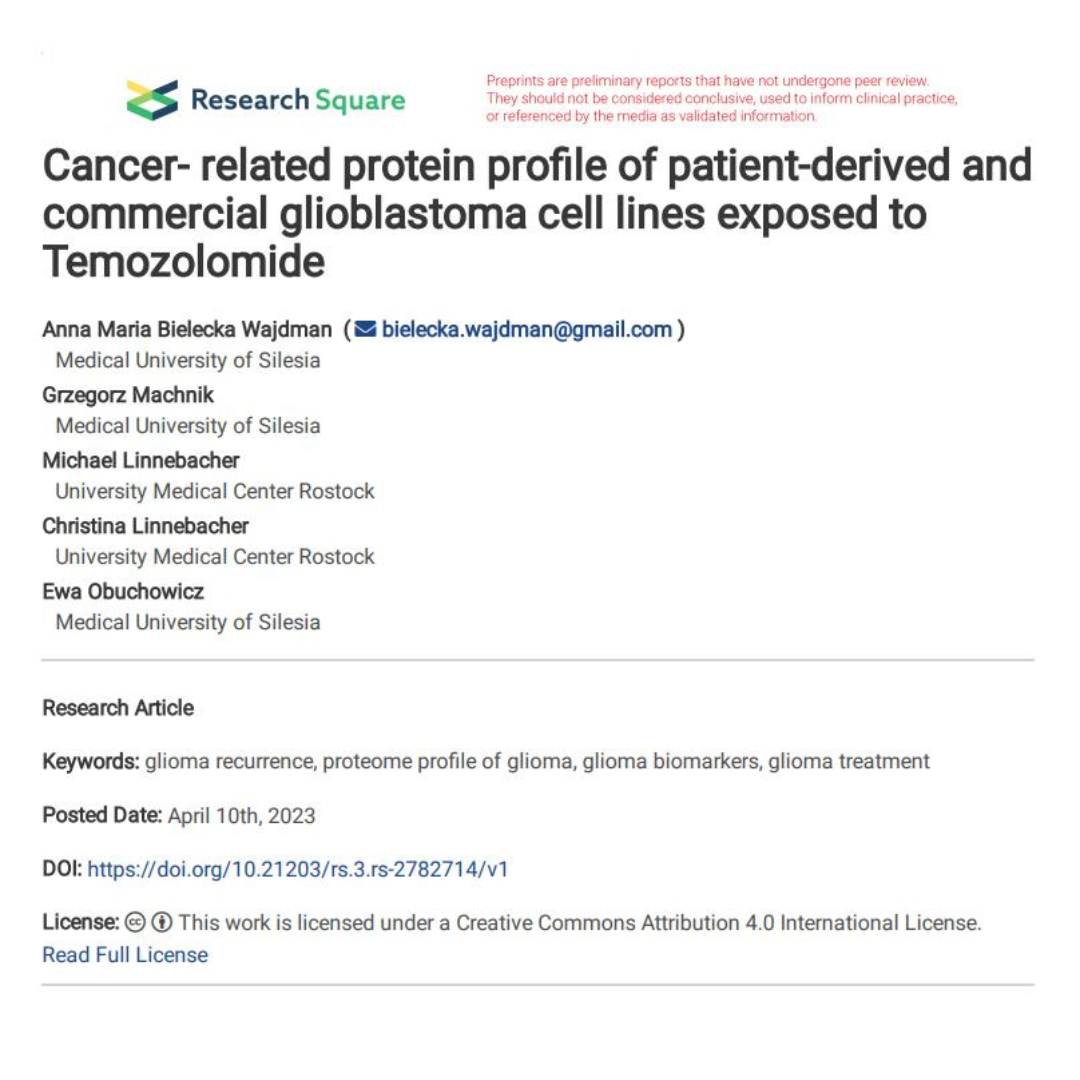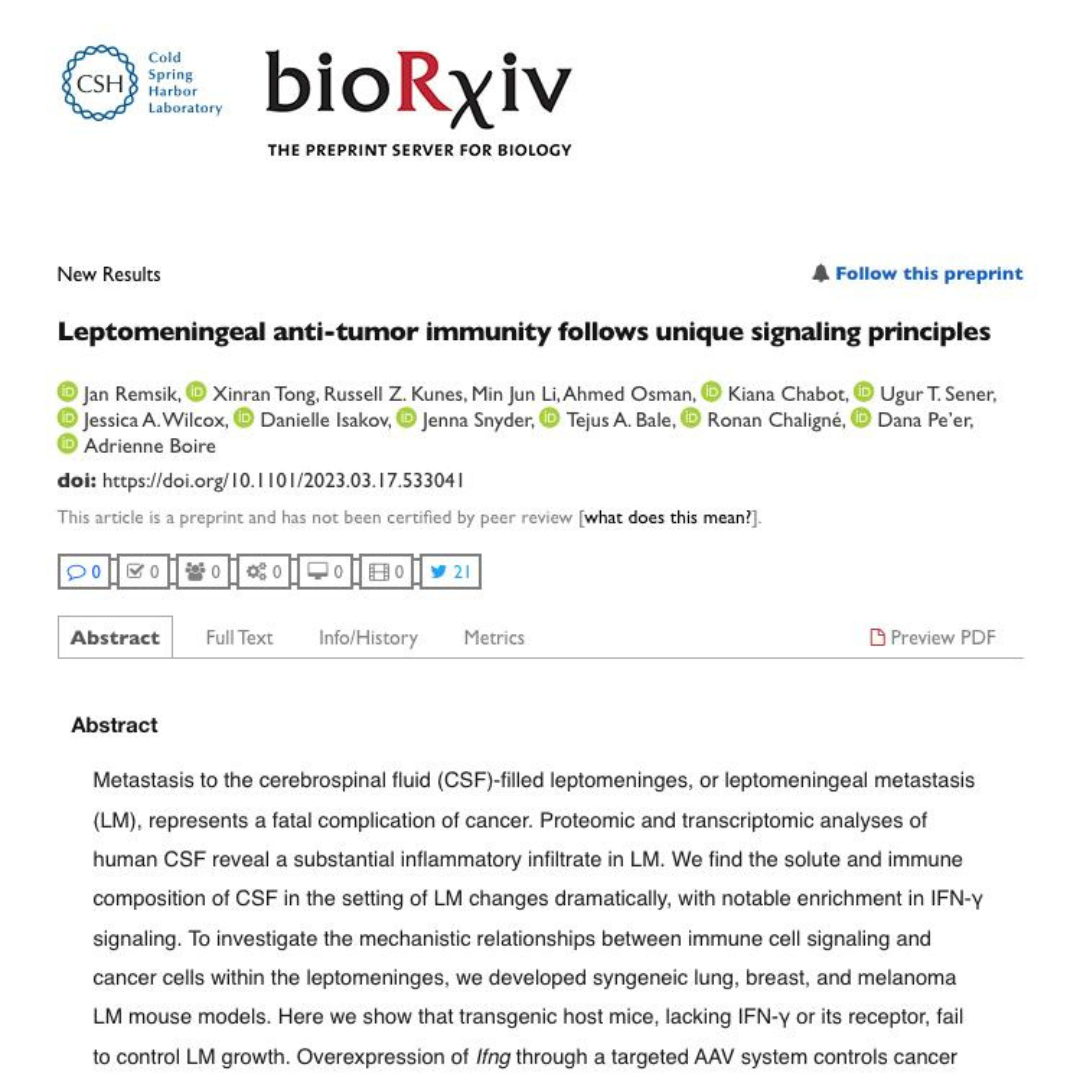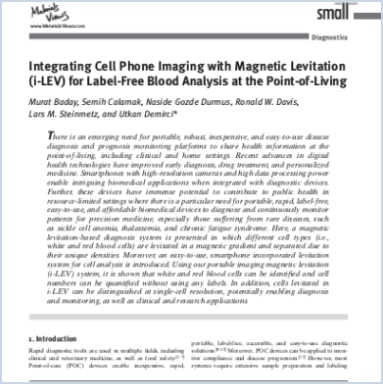- Resources
Publications
There is a need to define regions of gene activation or repression that control human kidney cells in states of health, injury, and repair to understand the molecular pathogenesis of kidney disease and design therapeutic strategies. However, comprehensive integration of gene expression with epigenetic features that define regulatory elements remains a significant challenge.
Hypodiploid acute lymphoblastic leukemia (ALL) is an aggressive blood cancer with a poor prognosis despite intensive chemotherapy or stem cell transplant. Children and adolescents with positive end-of-induction minimal residual disease have an overall survival lower than 30%. However, data regarding therapeutic alternatives for this disease is nearly nonexistent, emphasizing the critical need for new or adjunctive therapies that can improve outcomes.
Since recurrence is observed in almost all glioma patients deeper insight into mechanisms responsible for therapy resistance and identification of new biomarkers is urgently required. In this study were analyzed differences in expression of 84 cancer- related proteins in three GBM cell lines: the commercial T98G cells and two patient-derived cell lines.
Metastasis to the cerebrospinal fluid (CSF)-filled leptomeninges, or leptomeningeal metastasis (LM), represents a fatal complication of cancer. Proteomic and transcriptomic analyses of human CSF reveal a substantial inflammatory infiltrate in LM. We find the solute and immune composition of CSF in the setting of LM changes dramatically, with notable enrichment in IFN-γ signaling.
Density is a core material property and varies between different cell types, mainly based on differences in their lipid content. Sorting based on density enables various biomedical applications such as multi‐omics in precision medicine and regenerative repair in medicine.
Integrating Cell Phone Imaging with Magnetic Levitation (i-LEV) for Label-Free Blood Analysis at the Point-of-Living

